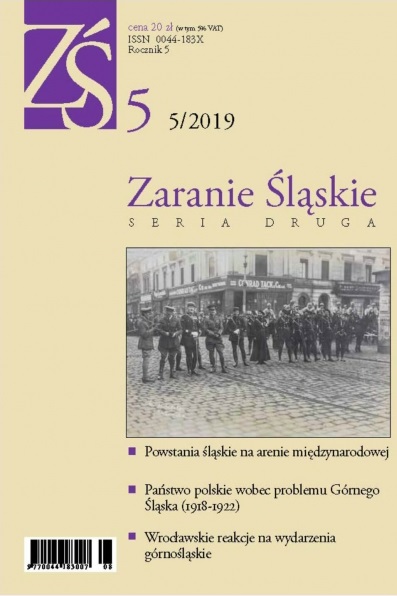The Polish state and Polish public opinion on the problem of Upper Silesia in the years 1918-1922
Abstract
The way the commitment of the Polish state in the Polish-German conflict in
Upper Silesia was accounted for largely depended on the political affinities: in the
interwar period it was supposed to stem from the conflict between the Centre-
Right and Belvedere camps, while in the times of the Polish People’s Republic it
was part of the history of revolutionary activity or confrontation with the Sanacja
camp, allegedly indifferent to the Silesian cause. In the Polish history writing over
the last hundred years the military commitment of the Polish state in Upper Silesia
has all been passed over, despite the fact that the latter’s assistance in providing
human and material resources started in the Autumn of 1920 and continued
throughout the period – it would not have been possible, for instance, to win the
positions on the Korfanty line without it. Regardless of the effort of the Polish state
to become engaged in the fighting in Upper Silesia, once the fight had finished
and the disputed territory had been divided, it was consistently represented as no
more than desperate attempts on the part of Upper Silesian people, deprived of the
Polish assistance and fighting against regular German troops. This view still lives
on in the collective historical memory, which is partly due to the popularity of
Kazimierz Kutz’s otherwise superb film Sól ziemi czarnej [Salt of the Black Earth].
The notion that the Polish support for the Silesian Uprisings was insufficient – an
idea that took shape already in the interwar period and was strongly motivated by
the Polish raison d’état – should thus be deemed false.
Downloads
Published
Issue
Section
License

This work is licensed under a Creative Commons Attribution-NonCommercial-NoDerivatives 4.0 International License.
Since transitioning to a digital format, the journal has been operating under open access, meaning all content is freely available to users and institutions.
In issue 8 (2022), published articles are licensed under the Attribution 4.0 International (CC BY 4.0) license.
The full license text is available at: https://creativecommons.org/licenses/by/4.0/legalcode.
Since issue 9 (2023), published articles are licensed under the Attribution-NonCommercial-NoDerivatives 4.0 International (CC BY-NC-ND 4.0) license.
The full license text is available at: https://creativecommons.org/licenses/by-nc-nd/4.0/legalcode.pl.



